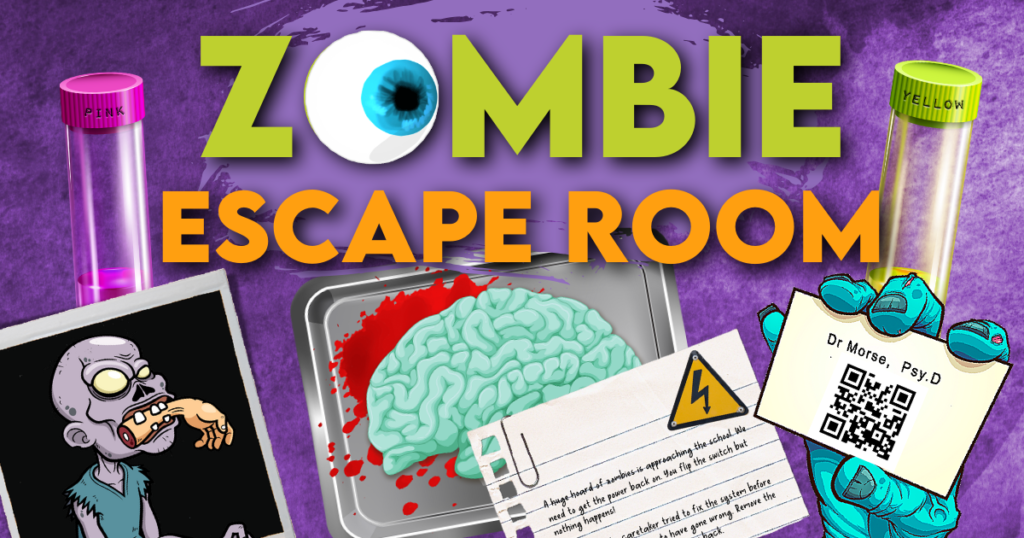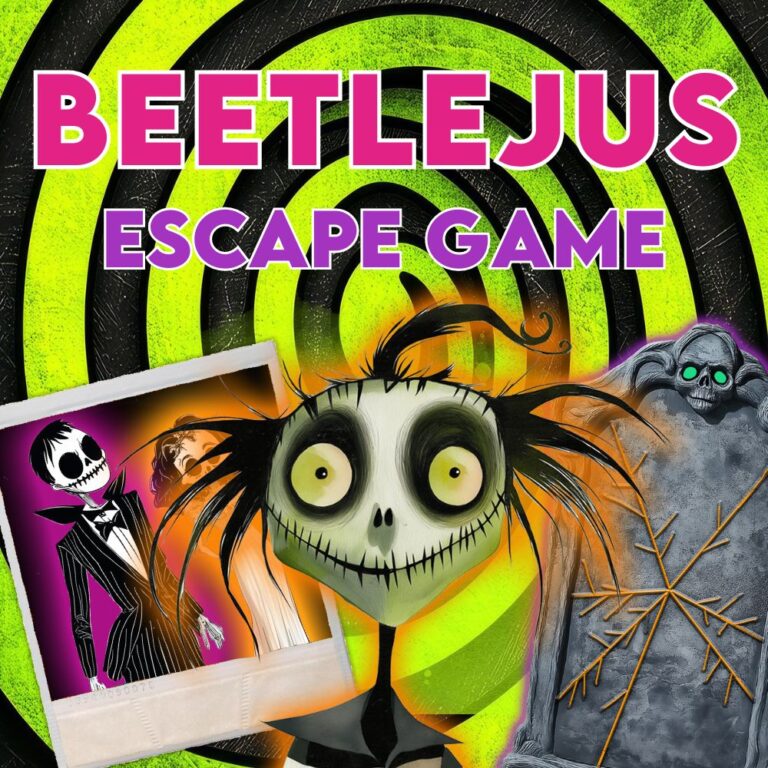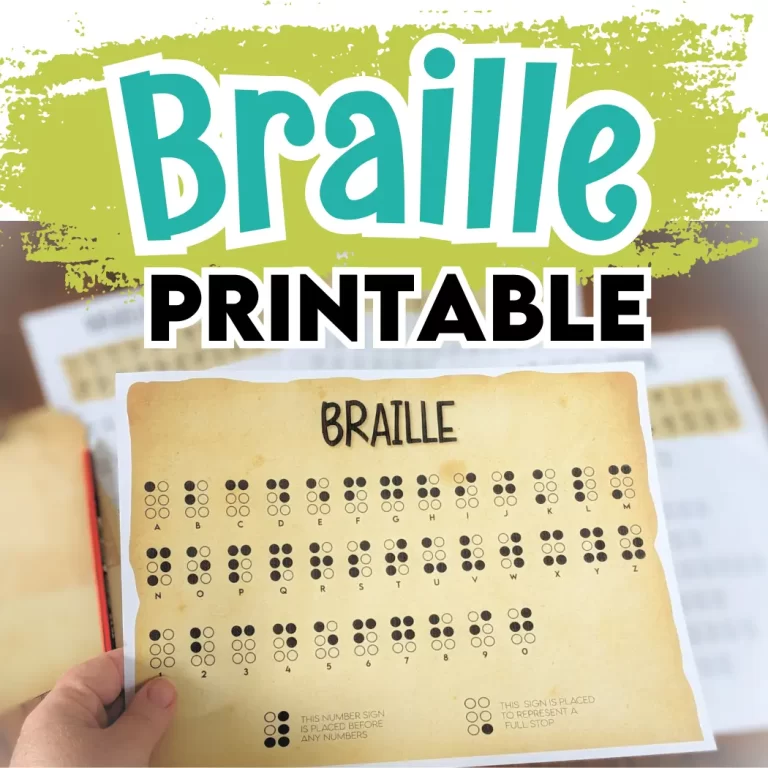Secret Codes to Use in Your DIY Escape Room
This post may contain affiliate links, please read our affiliate disclosure.
Creating your own DIY escape room for your friends and family is a lot of fun. I’ve created games to celebrate all kinds of events, birthdays, family get-togethers, and, of course, every major holiday you could probably think of. I only need the slightest excuse to get creating a new game. One of the key elements that can make or break your escape room is the use of secret codes.
I’ve put together a list of simple secret codes that will spice up your escape room, a great way to up the excitement! Imagine the surprise on your friends’ faces as they crack codes, solve puzzles, and enjoy the ahh ha moments of solving a sneaky coded message. No need for high-tech gadgets or expensive props just some simple secret codes. Ready to spice up your next game night? Let’s get started!
Why Use Secret Codes in Your DIY Escape Room?
Throwing in a few secret codes into the mix can take your game up to the next level. It’s more of a challenge for sure, but ultimately, it’s a lot more fun. You can turn a fun puzzle into an epic puzzle with a few tweaks.
Enhancing the Challenge
Including fun secret codes makes your game more interactive. Rather than just solving puzzles, players need to crack codes, which makes the game more intriguing. It’s like adding an extra lock to a treasure chest—they need both the key and the combination to succeed.
Boosting the Fun Factor
Solving secret codes is just so satisfying. There is a sense of excitement in solving a fun mystery. Achieving a breakthrough after struggling with a tough code can be super exciting. Use these codes as a base to create your own secret codes to match your game theme. Use them to reveal clues to move your story forward or reveal a secret word needed to solve a puzzle.
Common Codes to Use
OK, now then, into the nitty gritty of code-breaking and making fun. It’s time to take a look at some of the most common codes you can use to keep your players scratching their heads in puzzlement, well, for a few minutes, maybe.
Pigpen Cipher
The Pigpen Cipher is a simple substitution cipher that replaces each letter with a symbol. It resembles a “pigpen” or grid, making it perfect for visual puzzles. This is one of my favorite codes, as I can overlay the graphic onto all kinds of images that match my theme.
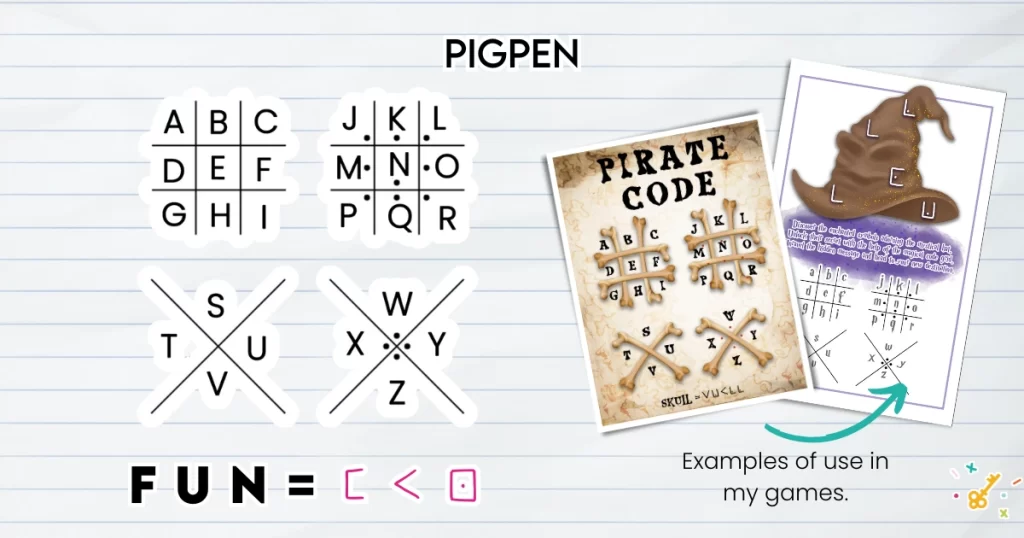
I love the way this code looks; it’s strange but deceptively simple. Grab my pigpen cipher kit. You’ll be able to create your own secret message using this fun code in no time.
Morse Code
Morse code is probably one of the most easily recognized codes. It uses different combinations of dots and dashes (referred to as dits and dahs) to represent letters and numbers. This system was originally used for long-distance communication via telegraph.
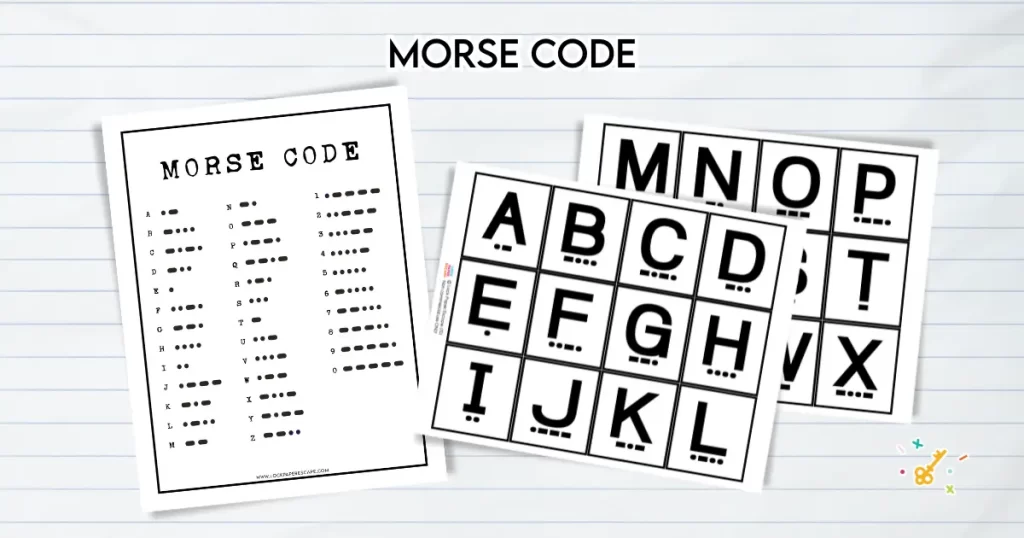
Use Morse code to convert text in your game. Players need decipher the text to solve a puzzle or reveal clues. Hide a message in plain sight, like in a series of blinking lights or even sounds. Be warned audio Morse code can be tricky to decode if it is too fast, so if you opt for audio, slow it down to give your players a chance of decoding the message. Find out more about this fun code and even grab my Morse code worksheet and activity pack.
Creative ways to use Morse Code:
- Use push buttons to record your Morse code message; they work a treat in DIY escape rooms. Record each letter on a different button. They are affordable and available on Amazon.
- Flash a light in Morse Code.
- Pin different-sized balloons to a piece of string, (long and round types). I saw this in an episode of the TV show “Task Master“. Genius idea.
- Hide specific words using the code in a photograph or other documents, ephemera used in your game.
Cipher Wheel
A Cipher Wheel is a fun and interactive tool for coding and decoding messages. You can make one easily with two paper circles and a paper fastener or split pin.
How to make a basic Cipher Wheel:
- Cut out two circles (one smaller than the other).
- Write the letters of the alphabet around the edge of both circles.
- Secure the smaller circle on top of the larger one with a pin or fastener, it should be able to rotate.
- Choose a letter from the outer and inner wheels to align together; this will be your key.
- With your wheels aligned, secure them together with a paper clip so they don’t move. This will help you to read the letters and write out your secret message.

I like to create decoder wheels with images on the outside wheel and letters on the inside. In the example above, I used pirate images to represent letters. In a pirate-themed escape I created, I used the pictures found on the decoder wheel to decorate flags. I then strung the flags up inside the room. This was a fun addition; they looked like a prop at first glance.
Braille
Braille uses combinations of raised dots to represent letters, making it possible to create a tactile puzzle. It adds an interesting sensory element to your escape room. Each Braille character is made up of six dots arranged in a grid of two columns.

You can get very creative using Braille, creating texture-based puzzles where players feel the clues. All you’ll need to do is punch holes into card stock. This is probably better suited for older children. For younger children, I would opt to create a fun activity where the players see a visual representation of the code.
Hieroglyphs
Dating back to ancient Egypt, hieroglyphs are not actually a code, do lend themselves to making some fun secret code activities to throw into your game. Hieroglyphs naturally lend themselves to be used in a Pharoah’s tomb escape room game. The best part is that many people already understand that the symbols need to be decoded. All that is left really is for you to decide the fun way to include it in your game.
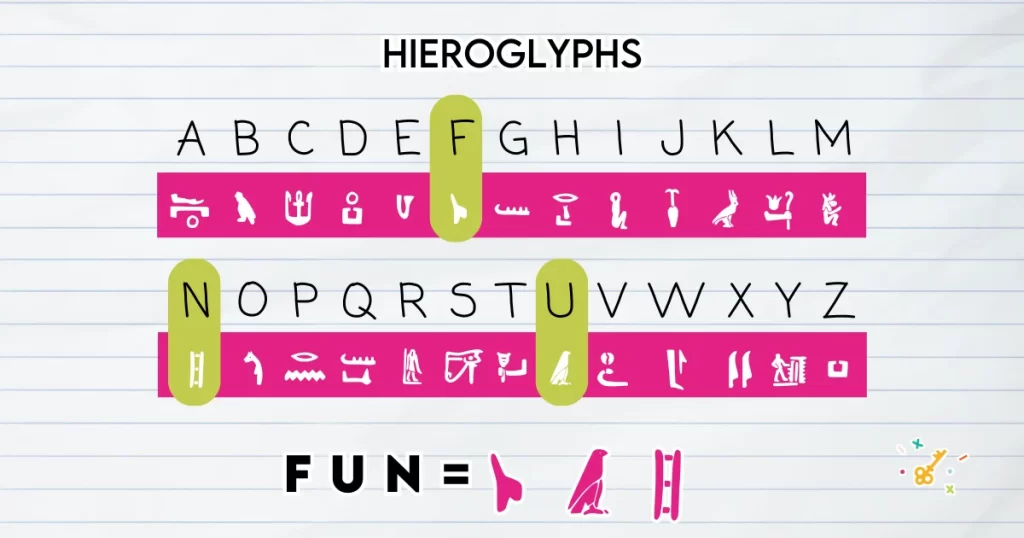
Templar Code
The Templar Code originated with the Knights Templar. It’s code shrouded my mystery. It is very similar in principal to the pigpen code. I love being able to take the symbols and add them as graphics into other props for my escape rooms. You can draw the symbols onto of photographs of ephemera.

Semaphore
Semaphore signals use flags to represent letters based on the position of the flag bearer’s arms. This makes a clear choice for nautical-themed games. Use the semaphore images in fun and creative ways. Take some photos of a family member dressed as a pirate holding different flag positions. Print out your photos and place them in a certain order to reveal a message to your players.
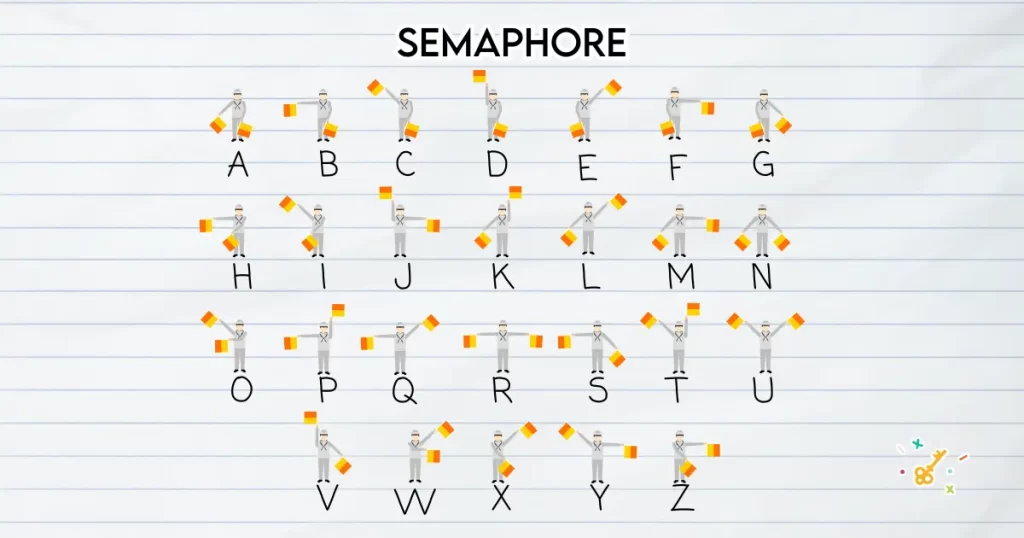
Caesar Shift Cipher
Interesting fact, this cipher is named after Julius Caesar, who reportedly used it in his private correspondence. The Caesar Cipher is another type of substitution cipher. Each letter of the alphabet is shifted a certain number of places left or right. You can even use a secret word that players use to move positions. It is the number of letters in the word you choose that players will shift their alphabet.
Step-by-step method:
- Choose a shift number: Common shifts are 3 or 4 places.
- Encrypt your message: Shift each letter of your message by the number you chose. For instance, with a shift of 3 right, “A” becomes “D,” “B” becomes “E,” and so on.
- Decrypt the message: Reverse the process, shifting in the reverse direction by the same number.
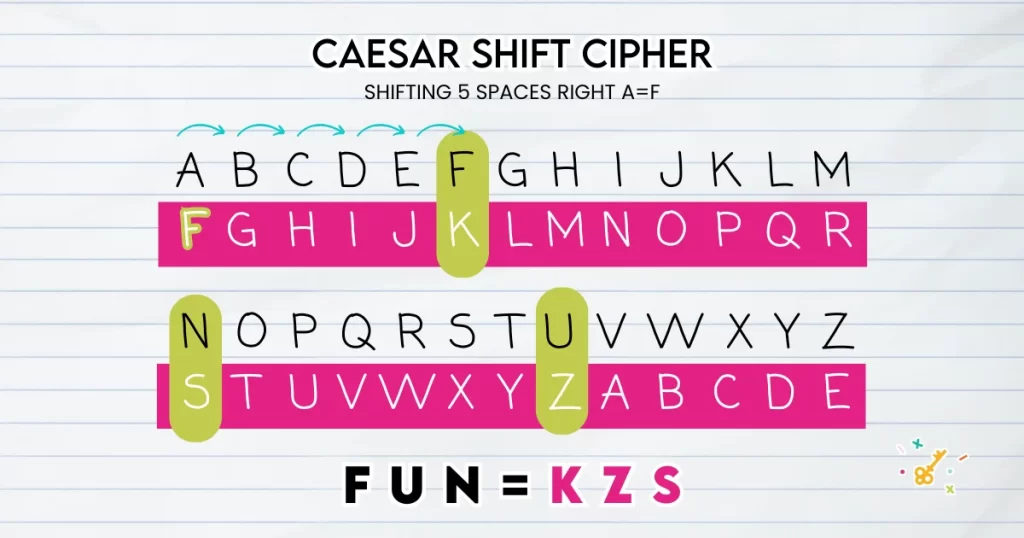
Using a secret code word method:
- Choose a shift word: Choose a word that fits your theme. I will use the word MAGIC, for example, with a right shift.
- Encrypt your message: Shift each letter of your message right by the number of letters in the word MAGIC. So, we use a shift of 5, “A” becomes “F,” “B” becomes “G,” and so on.
- Decrypt the message: Reverse the process, shifting backward by the same number.
Example:
- Original: HELLO
- With a shift of 5: MJGGT
Binary
Binary code is the language of computers, using only two digits: 0 and 1. It might seem complicated, but it’s actually quite simple once you get the hang of it. The best part about using binary to create your own secret codes is that you can use any symbols to represent 1’s and 0’s. This makes incorporating this kind of secret code adaptable for any theme.
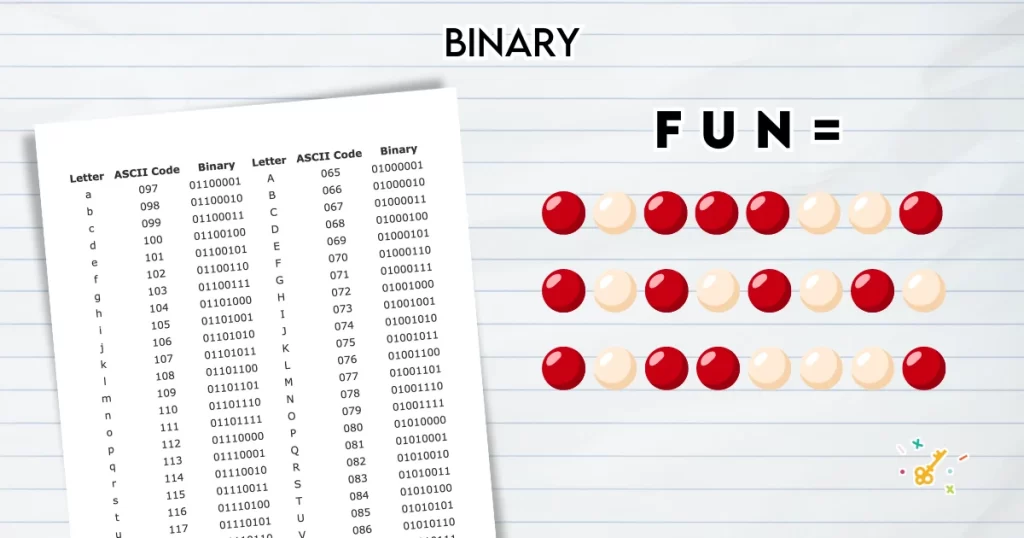
Atbash Code
The Atbash Code is a very simple substitution cipher. Each letter is reversed: A becomes Z, B becomes Y, C becomes X, and so on. This second substituted alphabet is often referred to as the “ciphertext.” I like to. use this code when creating kids games as it is easy to understand and give directions on how to use it.
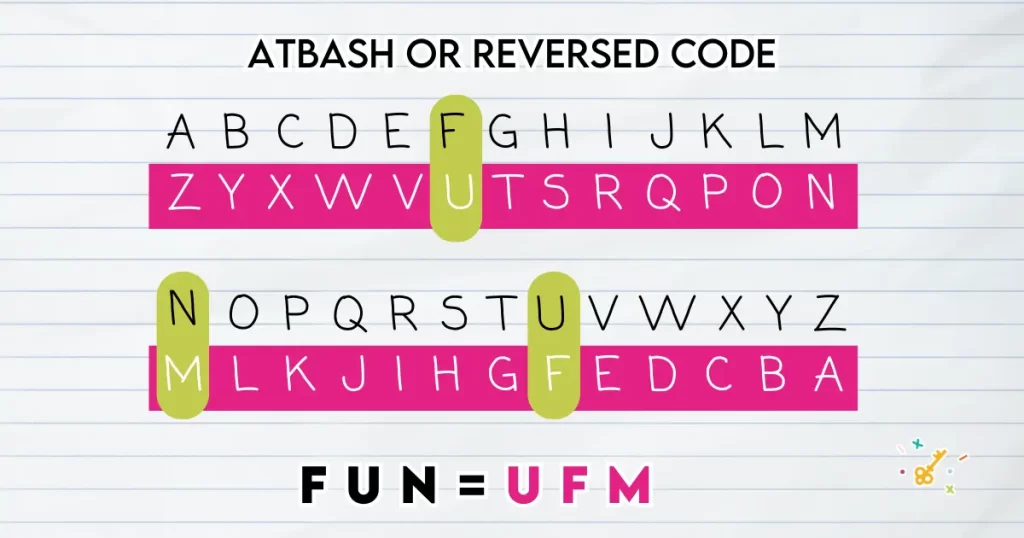
Polybius Square
The Polybius Square is another favorite of mine. I love this simple cipher, which uses a 5×5 grid filled with letters. To encrypt a message, you replace each letter with its coordinate in the grid. Typically you will see people use numbers for the grid co-ordinates but I like to use images that match my game theme.
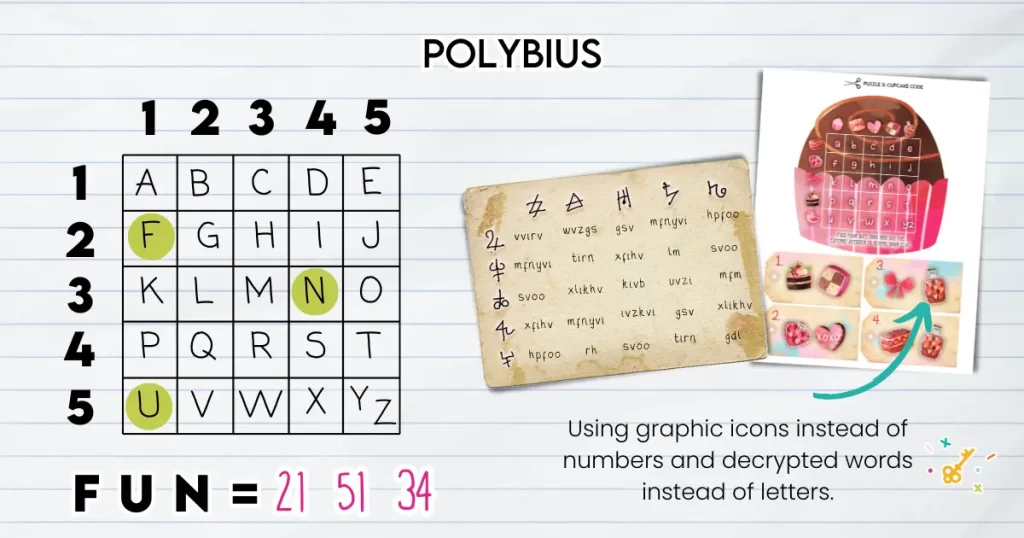
This is a fun puzzle for younger children. You can make this code more challenging for older children and adults by omitting some of the letters in the grid or by using another secret code to represent the letters of the alphabet. This make a the simple polybius square and fun mystery to solve.
American Sign Language
American sign language is another easily recognizable code. You can incorporate the code as a series of images that need to be placed in a certain order to reveal your message. But if you are feeling creative, grab your phone’s camera and record someone actually using sign language to deliver your message.
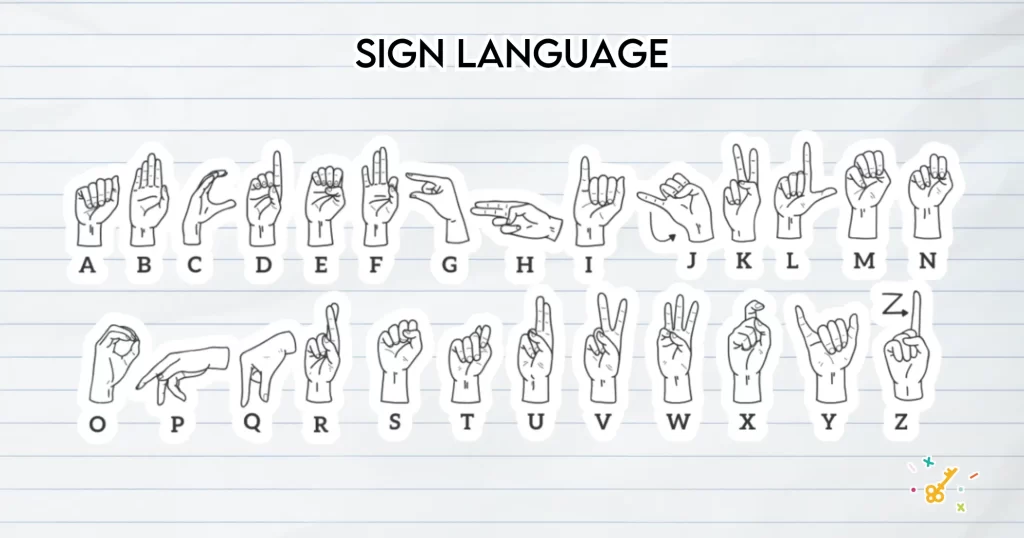
Skytale Cipher
The Skytale cipher is an ancient transposition cipher used by the Greeks.
How to use it:
- Wrap a strip of paper around a rod or skytale.
- Write your message along the length of the rod.
- Unwrap the paper to reveal the coded message.
Phone Code
Phone codes use the letters on a phone keypad to create messages. I love the simplicity of this code and it works really well in adult games when you use vintage telephone imagery. Younger players sometimes need a hint on how to solve it. They are more used to swipe texting on a phone it feels a bit more alien to them. My sister-in-law could type an essay in minutes using her old Nokia phone, while still inside her pocket, and holding a conversation at the same time, It still amazes me today!
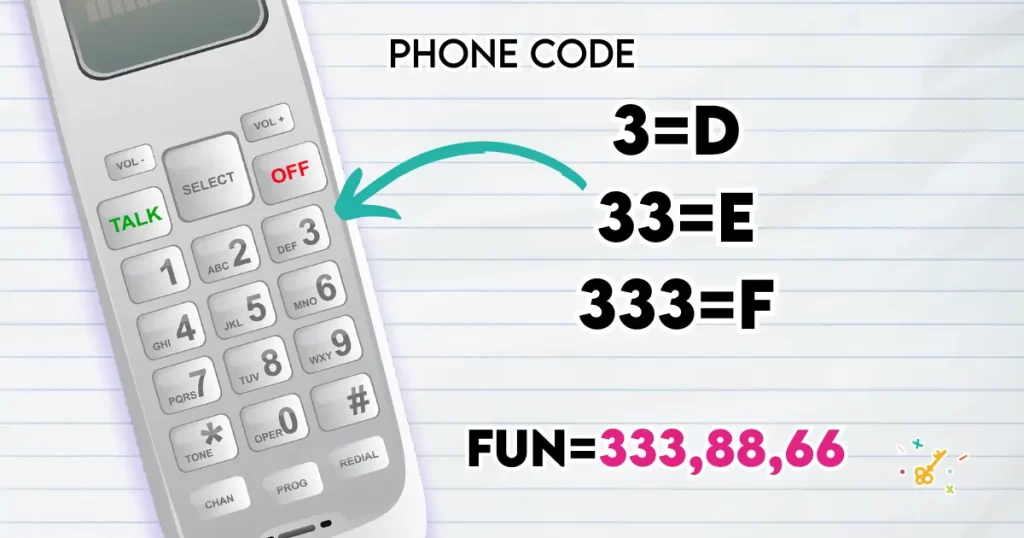
Fun and Creative Secret Code Ideas
The key to using codes in your escape rooms is to balance difficulty with fun, making sure that your guests are immersed but not frustrated. Here are a few tips to help you, including secret codes that keep everyone on their toes.
Keeping It Simple
While it’s tempting to design highly complex codes that would baffle even the smartest cryptographer, simplicity is your friend. Remember, the goal is to have fun, not to make the game unsolvable. Balancing the difficulty can be tricky, but here are some tips:
- Limit Complexity: Start with basic ciphers or common codes that the players recognize. Then consider adding layers of difficulty by combining two different codes together.
- Step-by-Step: Break down complex codes into smaller, more manageable parts.
- Hidden In Plain Sight: The easiest way to include any of the codes is to present them in plain sight. Add the code to posters and props for players to find.
Think of it as seasoning a dish: a little complexity adds flavor, but too much can be overwhelming.
Providing Clues
Hints are essential to keep the game moving and to avoid frustration. The trick is to make clues helpful yet subtle enough to not give away the answer. Here’s how you can provide effective hints:
- Layered Hints: Use a tiered hint system, where the first hint is vague and they become progressively clearer.
- Contextual Information: Drop hints through the storyline or character interactions to make them feel organic.
- My favorite way to help the game along is to exchange hints for forfeits. It makes the players feel as though they have earned the hint and not given up. Foreits can be things like a tongue twister that fits your theme or having the player do 20 pushups while humming a tune. Silly, fun and adds to the game.
Consider leaving a trail of breadcrumbs rather than handing them the whole loaf upfront.
Putting it all together.
Adding secret codes to your DIY escape room allows you to customize the adventure to suit your group’s interests and abilities. Whether it’s Morse code, the Pigpen Cipher, or even Semaphore, each secret code offers its own unique flair. Don’t be afraid to mix and match different codes together. There are no rules, this is your game and your friends and family will be talking about the clever clues and exciting “aha!” moments for at least a few days lol.
I would love for you to share your own code ideas below so I can try them out.
Let’s stay connected!
Love this? Make sure to connect on your favorite social platform below for even more fun and games!
Zombie Escape Room
The zombies are on the loose. Will Dr Pepper become a zombie, and will you survive long enough to save the world? Do you have what it takes to find a way to escape before the zombies get you? Try our fab family Zombie escape game!
